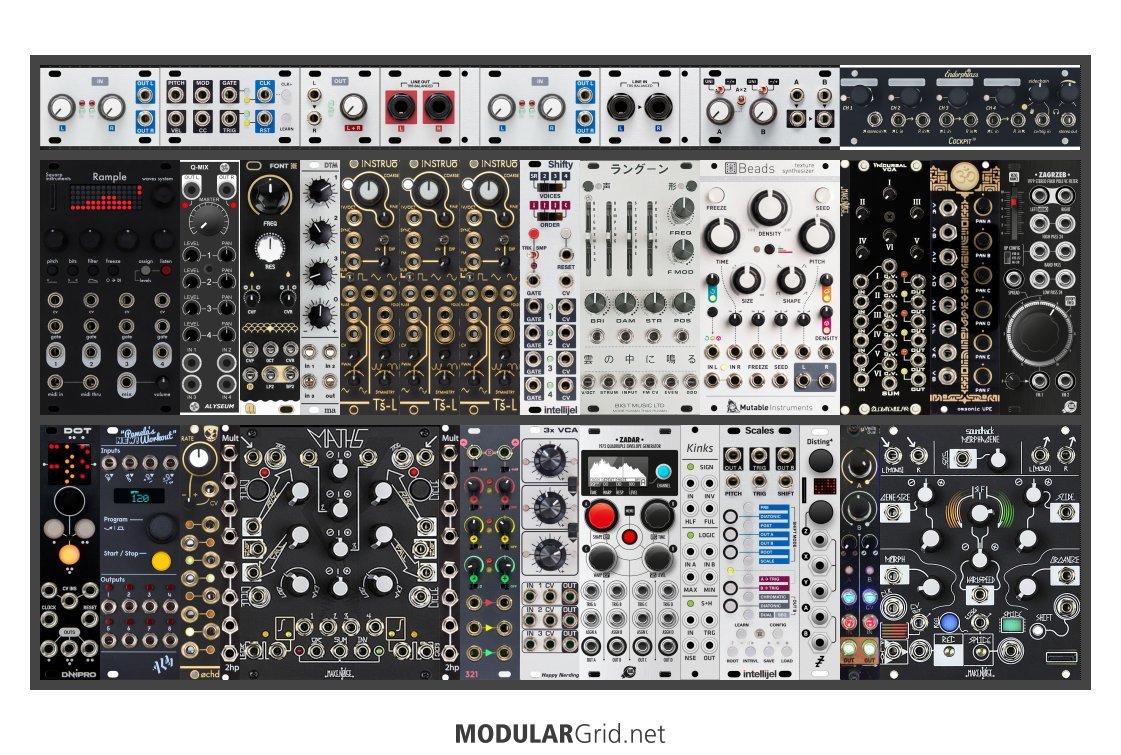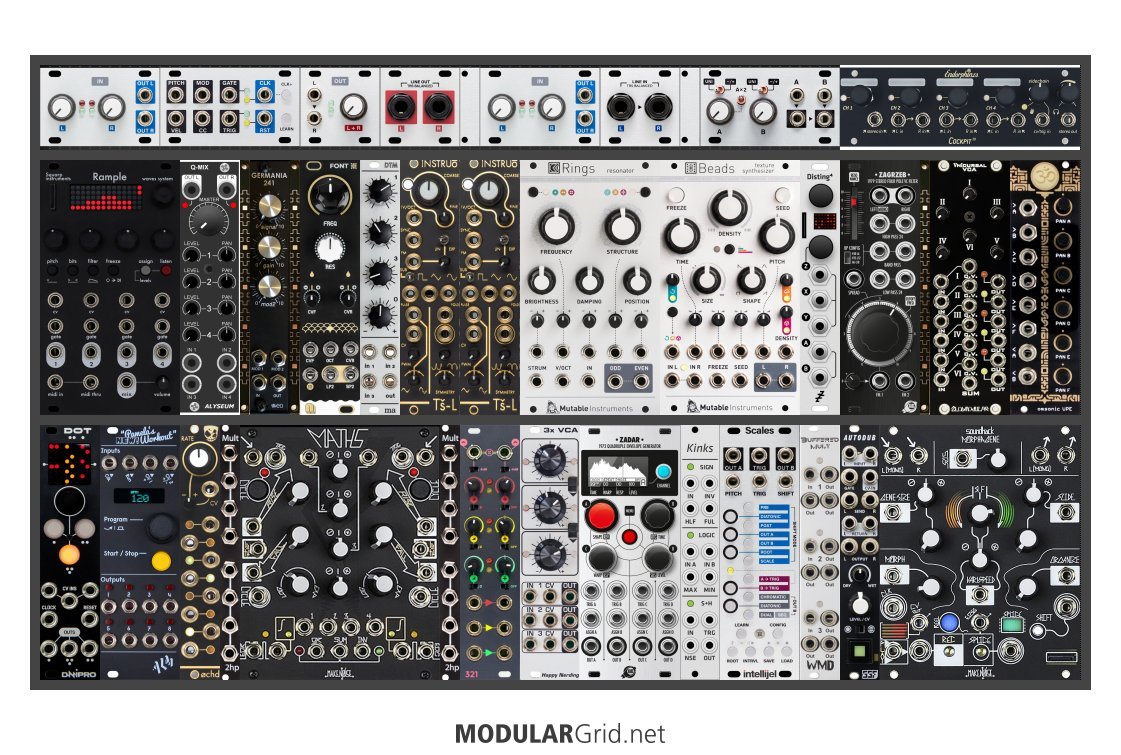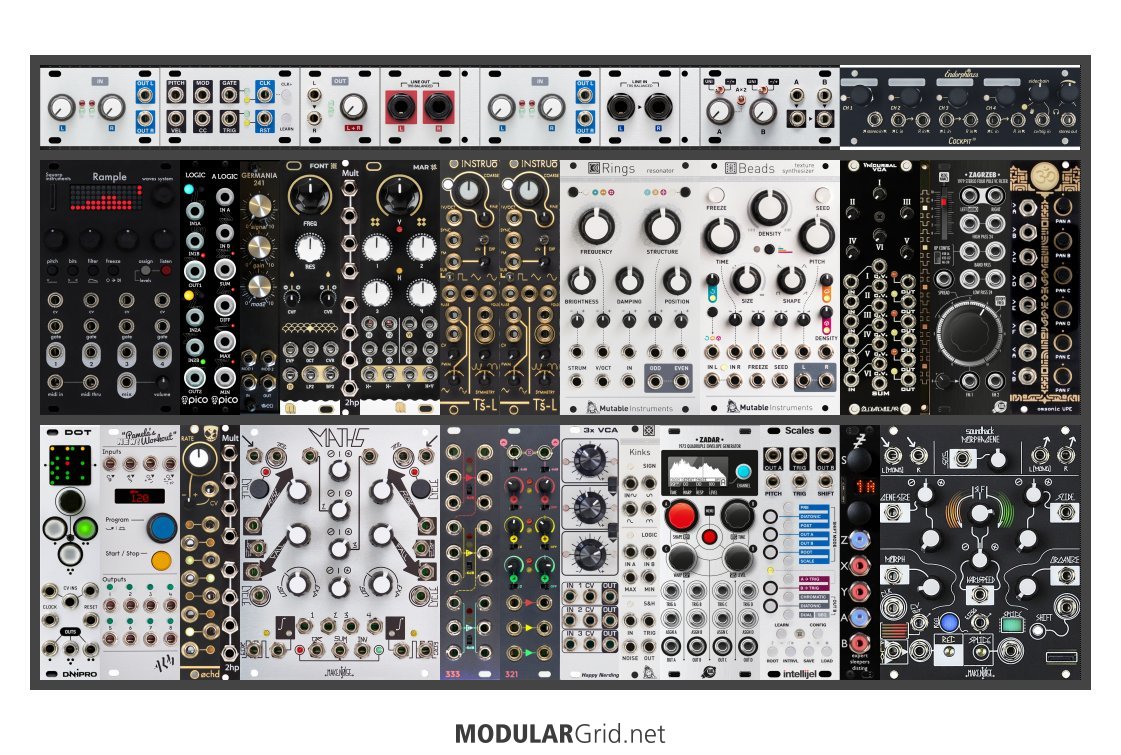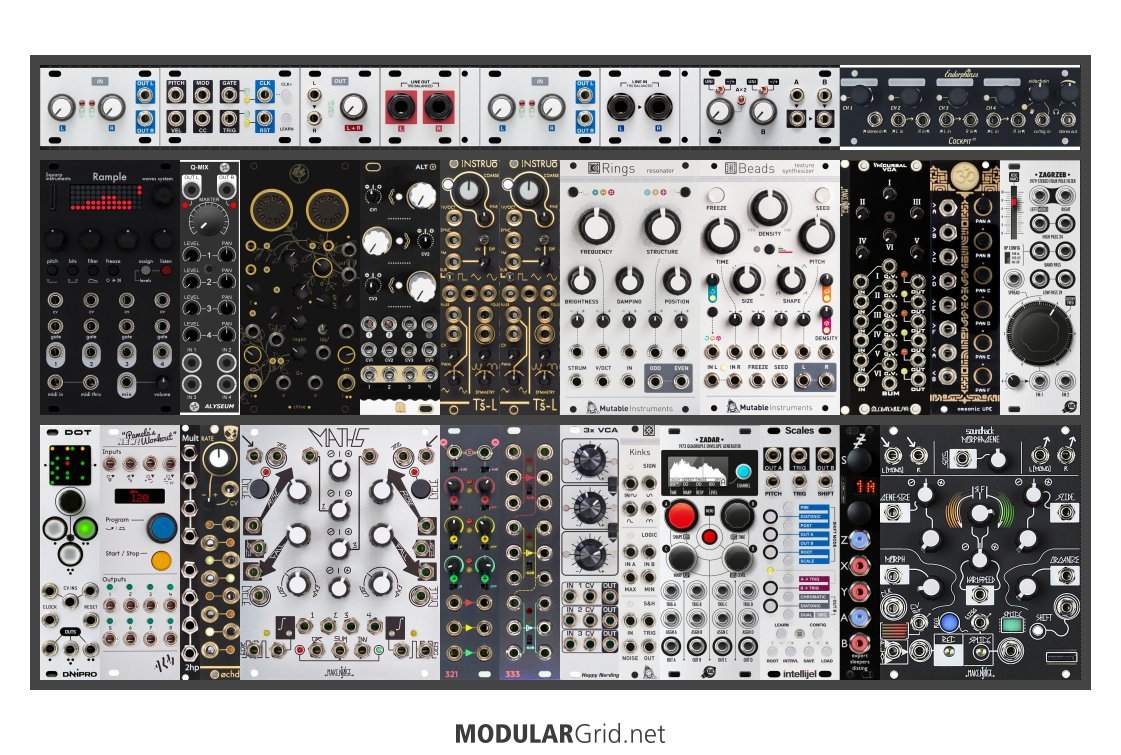Okay
Based on Lugia's suggestions I made this.
I reinstated some of the modules from my V1 (eg the DOT and Scales). Yeeees - I know their functions are duplicated elsewhere, but I really really really... really really want to have their specific functions easily to hand. Also it means that if for some reason I find myself without the Arturia Keystep, I still have CV and gate sequencers available.
I swapped out Lugia's suggested filter and oscillators for things that suit my own taste. Taking Lugia's lesson about 'multifunctionality' though, I was able to combine his wavefolder idea with the oscillator modules and at the same time shrink the footprint, thereby making room for a 3rd. I also added a CP3 style mixer. Groooovy!
I swapped many of Lugia's suggested modules with smaller ones with similar or identical functionality. I ditched the Intellijel FX and reinstated my proposed open-ended line level IO. On paper at least, this should function either an extra output bus or FX pedal board loop. I don't know why you guys were so against it haha. Am I missing something? :-P
I found a really cool little master mixer by Endorphin.es to replace the one suggested by Lugia. It connects directly to the Intellijel case's direct outputs on the back. I know the Endorphin.es mixer is totally different to Lugia's suggested one functionally speaking but I think the space gained has paid dividends.
My Concerns/niggles:
Now is that there is no basic dedicated effects on board. If I want a boring old delay or reverb I'll have to add it down stream or bring it in through the effects loop at the top.
The CP3 mixer and Nano filter are mono. If I could find solution that does a similar job in stereo, I'd have two fully fledged stereo buses - which would be far more flexible.
Kinks is taking up a lot of space for the sake of a single min/max gate. If could magically combine the Divkid S+H module with Kinks I'd do it. Any ideas?
The Omsonic panning mixer is the only uneven HP module so I've got 1 HP of space going to waste. Doh!!! :-P
Thoughts and advice most welcome please
Thanks
x





